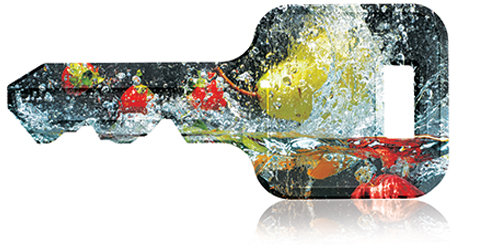Factors covered include growing, harvesting, processing, packing, labeling, storing, transporting, and employee hygiene. The analysis also must assess how severe an illness or injury would be as a result.
Evaluation
Based on the hazard analysis results, each importer must then evaluate the risk posed by the food, and how well its foreign supplier can control the hazard. This is where the program can get rather complicated.
“In some cases, it may be difficult to determine who the supplier actually is,” Dr. McEntire notes, “because if the importer’s trading partner is a broker, distributor, aggregator, etc. and is not the entity controlling hazards, that’s not the supplier according to FDA. Importers may need to look further back in their supply chains to determine where to even start.”
All suppliers must have a prevention plan in place that complies with U.S. safety standards. The plan should follow good agricultural practices, standard operating procedures covering the cleaning and sanitation of equipment, as well as employee hygiene. All aspects of production, processing, storage, and transportation should be included to prevent hazards. The food supplier’s safety history also must be documented; e.g., if the supplier has received an FDA warning letter, what happened? How did the supplier respond?
Supplier verification
In addition to all the plans and protocols, there must be verification that a foreign supplier is, in fact, complying with required U.S. food safety practices—even if the foreign source is an affiliated company. Importers have several options based on the specific food risk or supplier, though they must be able to justify the type of verification undertaken.
Sonia Salas, Western Grower Association’s director of Science and Technology, noted that the FDA is providing some flexibility with respect to verification. Testing the produce or reviewing a supplier’s safety record may be sufficient if the hazard risk is low.
However, a poor safety record for the product or supplier itself should prompt importers to document other verification activity. An onsite audit is required if the hazard can result in a serious adverse health consequence or death to humans or animals. Further, all onsite audits must be done by a qualified auditor, which can be a government employee. Salas says many importers “will have to rely on third-party auditors.”
If it turns out a foreign supplier is not in compliance with U.S. food safety regulations, the importer is required to take immediate action. Appropriate action depends on the circumstances, but can include suspending the supplier until compliance is met.
Qualified Individuals and Managing Compliance
In regional U.S. Food and Drug Administration (FDA) meetings on FSMA readiness last year, a number of importers expressed confusion and uncertainty about the required hazard analysis evaluations, the scope of the evaluation, and who could perform such an evaluation.



